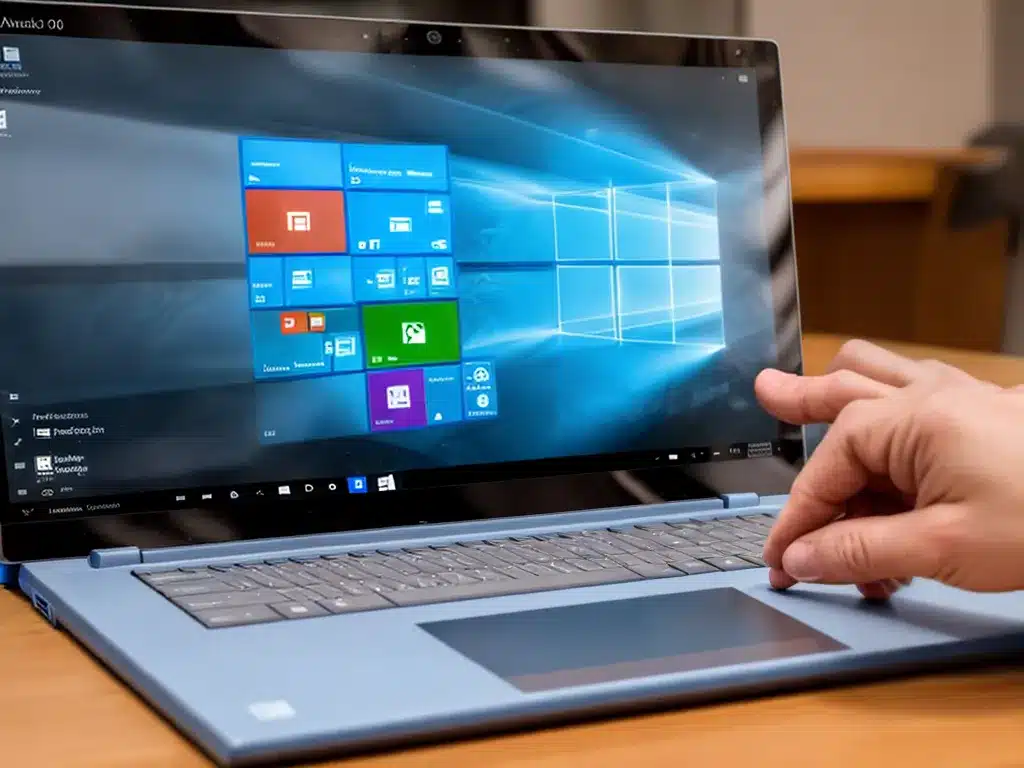
Introduction
Having your Windows 10 computer get stuck in a startup repair loop can be incredibly frustrating. This issue prevents you from being able to properly start up and use your PC. Thankfully, there are several potential solutions that may help resolve this problem. In this article, I will walk through the most common causes of the automatic repair loop issue and the steps you can take to fix it.
What Causes the Automatic Repair Loop?
There are a few main culprits that tend to cause a PC to get stuck in the automatic repair loop:
Corrupt System Files
One of the most common causes of the repair loop is corrupted Windows system files. Important system files can become damaged for various reasons, including a bad shutdown, failed updates, malware/virus infection, etc. With damaged system files, Windows cannot properly start up and initiate the automatic repair process, but the repair continually fails, creating a loop.
Hardware Failures
Failing or incompatible hardware components can also trigger the repair loop. For example, problems with your hard drive, RAM, or other key hardware can prevent Windows from starting properly. The automatic repair tries to fix the issues but is unsuccessful.
Driver Conflicts
Outdated, missing, or corrupted drivers can wreak havoc on your system. Driver-related issues can sometimes boot you into the automatic repair utility, with the system continually trying and failing to repair itself and start up correctly.
Boot Configuration Data Issues
Problems with the boot configuration data (BCD) store can result in automatic repair loop issues too. The BCD store contains important data needed for a successful Windows boot process. If this data is damaged or configured incorrectly, it can send you into a continual repair loop.
Fixing the Automatic Repair Loop
If you find yourself stuck in a constant automatic repair loop in Windows 10, don’t panic. Here are some steps to take to troubleshoot and resolve the problem:
Boot Into Safe Mode
First, try booting into Windows 10 safe mode. Safe mode loads only the essential drivers and services needed to start Windows. This allows you to bypass any problematic third-party drivers or software that may be causing the loop issue.
To enter safe mode, access the Advanced startup options menu from the Windows login screen. Then choose Troubleshoot > Advanced options > Startup Settings, and select Restart. After your PC restarts, press the F4 key while booting to launch the safe mode.
Run SFC and DISM Scans
Once in safe mode, run Command Prompt as Admin. Then execute the System File Checker (SFC) tool to scan for and replace any corrupted system files:
sfc /scannow
You can also run the Deployment Image Servicing and Management (DISM) tool to repair the Windows image:
DISM /Online /Cleanup-Image /RestoreHealth
Reboot after running these commands to see if the scans resolved the startup repair loop.
Startup Repair
If safe mode is successful but normal boot still loops repair, you can try using the Startup Repair tool. This automated utility works to fix common software issues preventing Windows from loading.
To run Startup Repair, go back to the Advanced startup options menu. Select Troubleshoot > Advanced options > Startup Repair. This will initiate the repair process.
System Restore
Doing a System Restore to rollback your PC to an earlier working state before the issues began may also fix an automatic repair loop.
Go back to the Advanced startup options and choose Troubleshoot > Advanced options > System Restore. Pick a restore point prior to when you first experienced repair loop issues.
Clean Boot
Another option is performing a clean boot in Windows. This prevents any third-party applications from loading at startup. The clean boot isolates software conflicts as the cause.
To clean boot Windows 10, open msconfig.exe and go to the Services tab. Check the box that says “Hide all Microsoft services” then disable all other services. Next go to the Startup tab and click Open Task Manager. Disable all startup programs here except for your antivirus.
Reset Windows
If none of the above options have resolved your automatic repair loop, resetting Windows 10 may be necessary. This will reinstall Windows and retain your personal files and settings.
Access the reset option from the Advanced startup menu’s Troubleshoot section. Choose Reset this PC, then pick Keep my files to preserve your data. Windows will reinstall system files and configuration to a clean default state, which should eliminate any underlying OS issues causing repair loops.
Summary
Getting trapped in the automatic repair loop when booting up Windows 10 is annoying but fixable. Possible solutions include booting into safe mode, running DISM and SFC scans, using Startup Repair, doing a system restore, clean booting, and resetting Windows. Identifying and addressing any underlying hardware faults, driver problems, file corruption, or software conflicts can help break you out of the constant restart loop. Persevering with one or a combination of these troubleshooting steps should get your PC successfully booting again.












